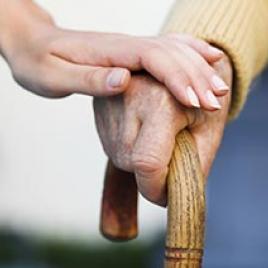Marijuana May Reduce Wide Range of Parkinson’s Symptoms
New research from Touro College of Pharmacy says marijuana has potential to reduce tremors, other debilitating symptoms and slow disease progression

New York, N.Y. - A group of scientists has found evidence that marijuana not only reduces tremors caused by Parkinson’s disease, but it may help other debilitating symptoms including insomnia, pain and depression.
The researchers from the Touro College of Pharmacy in New York also pointed to preliminary evidence showing that marijuana has anti-inflammatory and antioxidant properties that have the potential of slowing the progression of the disease. The findings were published today in a literature review titled, “Marijuana Compounds: A Non-Conventional Approach to Parkinson’s Disease Therapy,” in the journal Parkinson’s Disease.
“When we started doing this review, the therapies out there were basically for motor symptoms, but Parkinson’s also has non-motor symptoms that greatly impact the quality of a person’s life,” says Zvi Loewy, PhD, Professor and Chair, Pharmaceutical and Biomedical Sciences, at Touro College of Pharmacy. He and his fellow scientists undertook a comprehensive literature review and found clinical evidence that marijuana reduced motor symptoms including tremors and rigidity. They also found studies in people showing that marijuana can reduce pain and insomnia. Animal studies suggest that marijuana may reduce depression.
“The most significant finding is that the chemical complexity of marijuana provides multiple benefits that affect different symptoms of the disease,” says Loewy. For instance, pain affects nearly 50 percent of patients with Parkinson’s, but pain medications have significant drawbacks including addiction. “Marijuana has been found to relieve pain in other diseases and should be studied in Parkinson’s,” says Loewy.
Parkinson’s disease is the second most common neurological illness in the United States behind Alzheimer’s disease, affecting about one million Americans. In the progressive disease, a person's brain slowly stops producing dopamine, a neurotransmitter that plays an important role in movement and many other physical, cognitive and psychological functions. The medications available today target motor symptoms, they have a lot of limitations and have not been shown to slow the progression of the disease.
Compounds in marijuana, called cannabinoids, bind to dopamine receptors to help reduce the effects of the dwindling dopamine. “Essentially, the compounds replace the normal compounds that are adversely affected by Parkinson's,” says Loewy, whose lab has focused on the application of natural products for medicinal purposes.
The authors also described laboratory evidence showing that marijuana has anti-inflammatory and antioxidant affects that may prevent neuron damage. Inflammation can damage dopamine-producing neurons. A lack of dopamine contributes to movement problems in Parkinson’s, so preventing neuron damage could slow the progression of the disease.
“There is an urgent need for safer drugs that can treat both motor and non-motor symptoms of Parkinson’s disease as well as drugs that slow the progression of the disease,” the authors wrote. To date, 24 states and Washington DC have enacted laws allowing the use of marijuana to treat a range of medical conditions. Parkinson’s disease has been listed in a number of these states. Though laws vary, typically patients need to get a prescription from a physician and purchase the drug in an approved medical marijuana facility. It can be used in a range of forms, including smoking, tinctures, and eatables.
“Cannabis may provide a viable alternative or addition to the current treatment of Parkinson’s disease,” the authors wrote. Yet more research is needed to provide data on the efficacy and safety of marijuana and its molecular components. There is a concern about medical marijuana including lack of standardization and regulation, imprecise dosing, and possible adverse effects and medication interactions.
Loewy’s co-authors included Mariana Babayeva, MD, PhD, Haregewein Assefa, PhD, Paramita Basu, PhD, and Sanjeda Chumki, PharmD.
About the Touro College and University System
Touro is a system of non-profit institutions of higher and professional education. Touro College was chartered in 1970 primarily to enrich the Jewish heritage, and to serve the larger American and global community. Approximately 18,000 students are currently enrolled in its various schools and divisions. Touro College has 30 campuses and locations in New York, California, Nevada, Berlin, Jerusalem and Moscow. New York Medical College; Touro University California and its Nevada branch campus; Touro University Worldwide and its Touro College Los Angeles division; as well as Hebrew Theological College in Skokie, Ill. are separately accredited institutions within the Touro College and University System. For further information on Touro College, please go to: www.touro.edu/news/
Media Contact:
Elisheva Schlam
Executive Director of Communications
646-565-6420
elisheva.schlam@touro.edu

